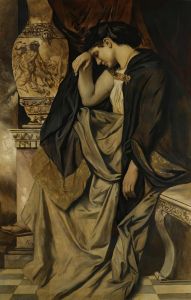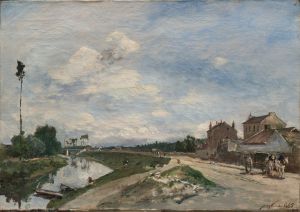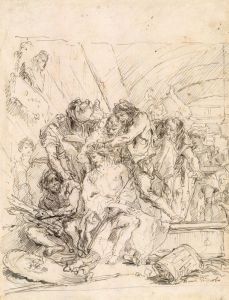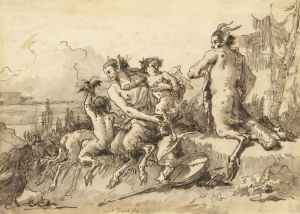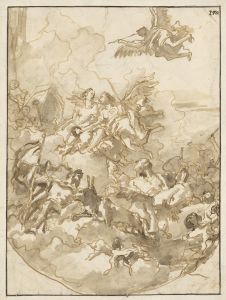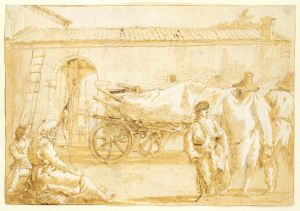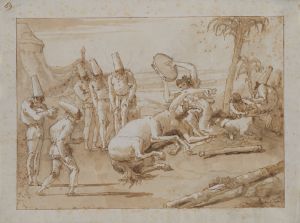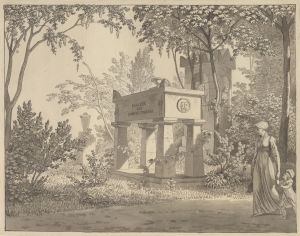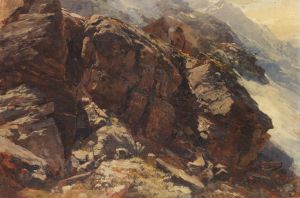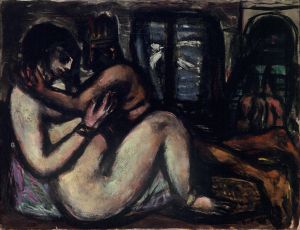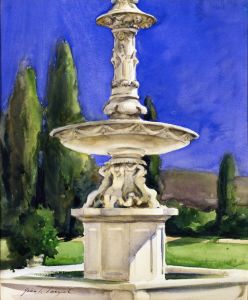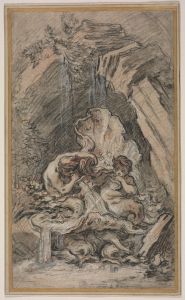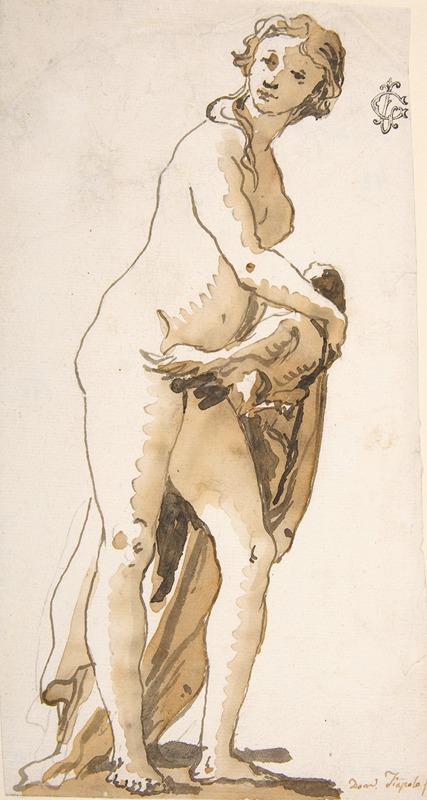
Study of a Garden Sculpture; Leda
A hand-painted replica of Giovanni Domenico Tiepolo’s masterpiece Study of a Garden Sculpture; Leda, meticulously crafted by professional artists to capture the true essence of the original. Each piece is created with museum-quality canvas and rare mineral pigments, carefully painted by experienced artists with delicate brushstrokes and rich, layered colors to perfectly recreate the texture of the original artwork. Unlike machine-printed reproductions, this hand-painted version brings the painting to life, infused with the artist’s emotions and skill in every stroke. Whether for personal collection or home decoration, it instantly elevates the artistic atmosphere of any space.
Giovanni Domenico Tiepolo, an Italian painter and printmaker, was a prominent figure in the 18th-century Venetian art scene. He was the son of the renowned artist Giovanni Battista Tiepolo and was known for his own distinct style that often incorporated elements of his father's influence. One of his works, "Study of a Garden Sculpture; Leda," reflects his skill in capturing both mythological themes and the elegance of garden settings.
"Study of a Garden Sculpture; Leda" is a drawing that showcases Tiepolo's interest in classical mythology and his ability to translate sculptural forms into two-dimensional art. The subject of Leda is derived from the myth of Leda and the Swan, a popular theme in art that tells the story of Leda, a queen of Sparta, who was seduced by Zeus in the form of a swan. This mythological narrative has been a rich source of inspiration for artists throughout history, and Tiepolo's interpretation is no exception.
In this particular study, Tiepolo focuses on the representation of a garden sculpture, which suggests that the artwork may have been intended as a preparatory study for a larger piece or as an exploration of the interplay between nature and art. The drawing captures the elegance and fluidity of the sculptural form, emphasizing the grace of Leda and the dynamic presence of the swan. Tiepolo's use of line and shading demonstrates his mastery of draftsmanship, bringing a sense of life and movement to the static medium of drawing.
The artwork is executed with a keen attention to detail, highlighting Tiepolo's ability to render textures and forms with precision. The study likely served as an exercise in understanding the complexities of light and shadow on three-dimensional objects, a skill that was essential for artists working in both painting and sculpture. Tiepolo's interest in garden sculptures also reflects the 18th-century fascination with classical antiquity and the incorporation of such elements into contemporary art and architecture.
Giovanni Domenico Tiepolo's work is characterized by its vibrant energy and dynamic compositions, often infused with a sense of whimsy and theatricality. His drawings, such as "Study of a Garden Sculpture; Leda," offer insight into his creative process and his ability to blend classical themes with his own artistic vision. While Tiepolo is perhaps best known for his larger frescoes and paintings, his drawings remain an important part of his oeuvre, showcasing his versatility and skill as an artist.
The study of Leda as a garden sculpture not only highlights Tiepolo's technical abilities but also his engagement with the cultural and artistic trends of his time. The 18th century was a period of renewed interest in classical themes, and artists like Tiepolo played a crucial role in interpreting these subjects for contemporary audiences. Through works like this, Tiepolo contributed to the ongoing dialogue between past and present, tradition and innovation.
In summary, Giovanni Domenico Tiepolo's "Study of a Garden Sculpture; Leda" is a testament to his artistic talent and his engagement with classical mythology. The drawing exemplifies his skill in capturing the essence of sculptural forms and his ability to convey movement and emotion through the medium of drawing. As part of his broader body of work, this study reflects Tiepolo's contribution to the rich tapestry of 18th-century Venetian art and his enduring legacy as a master draftsman.





